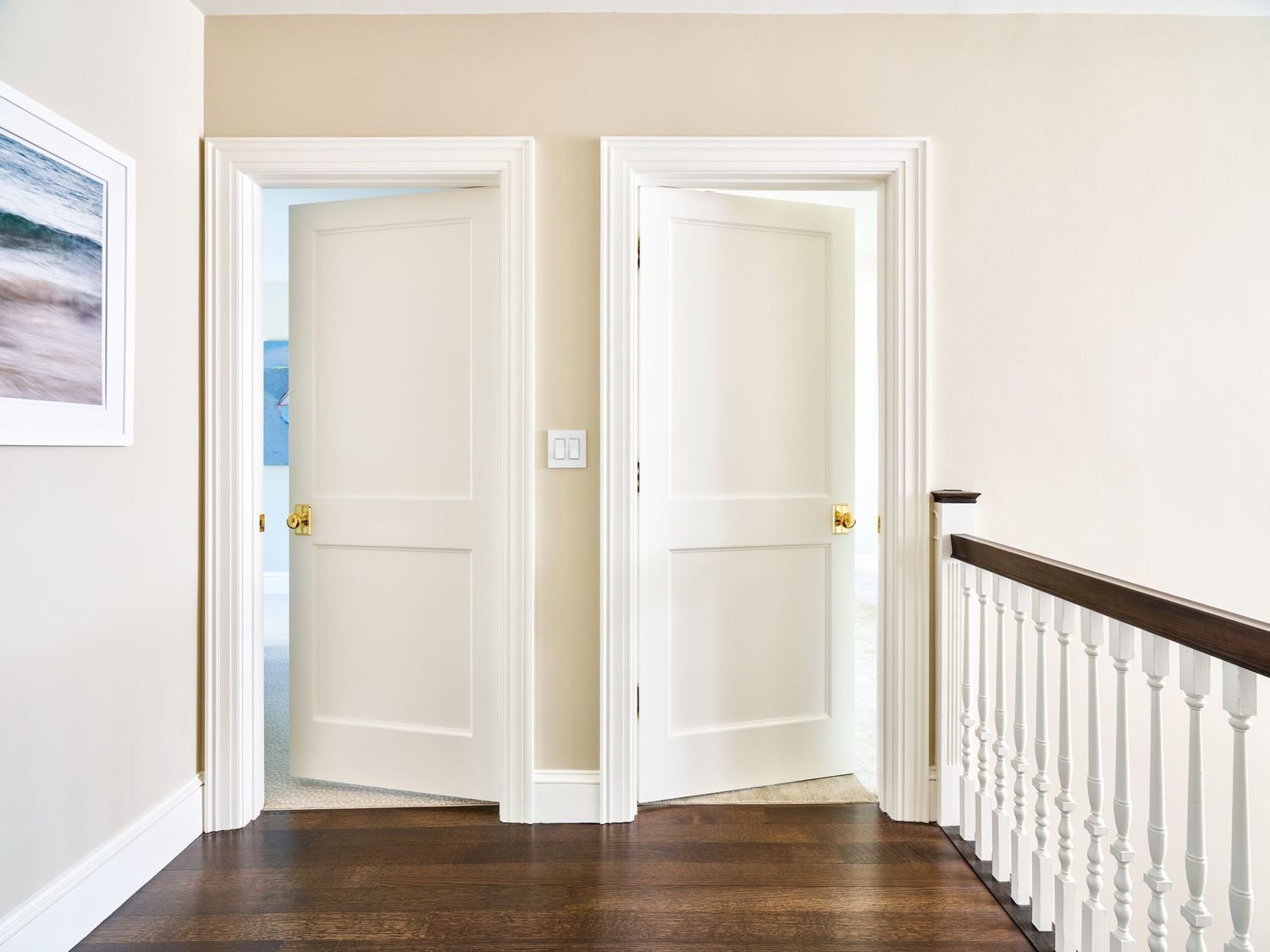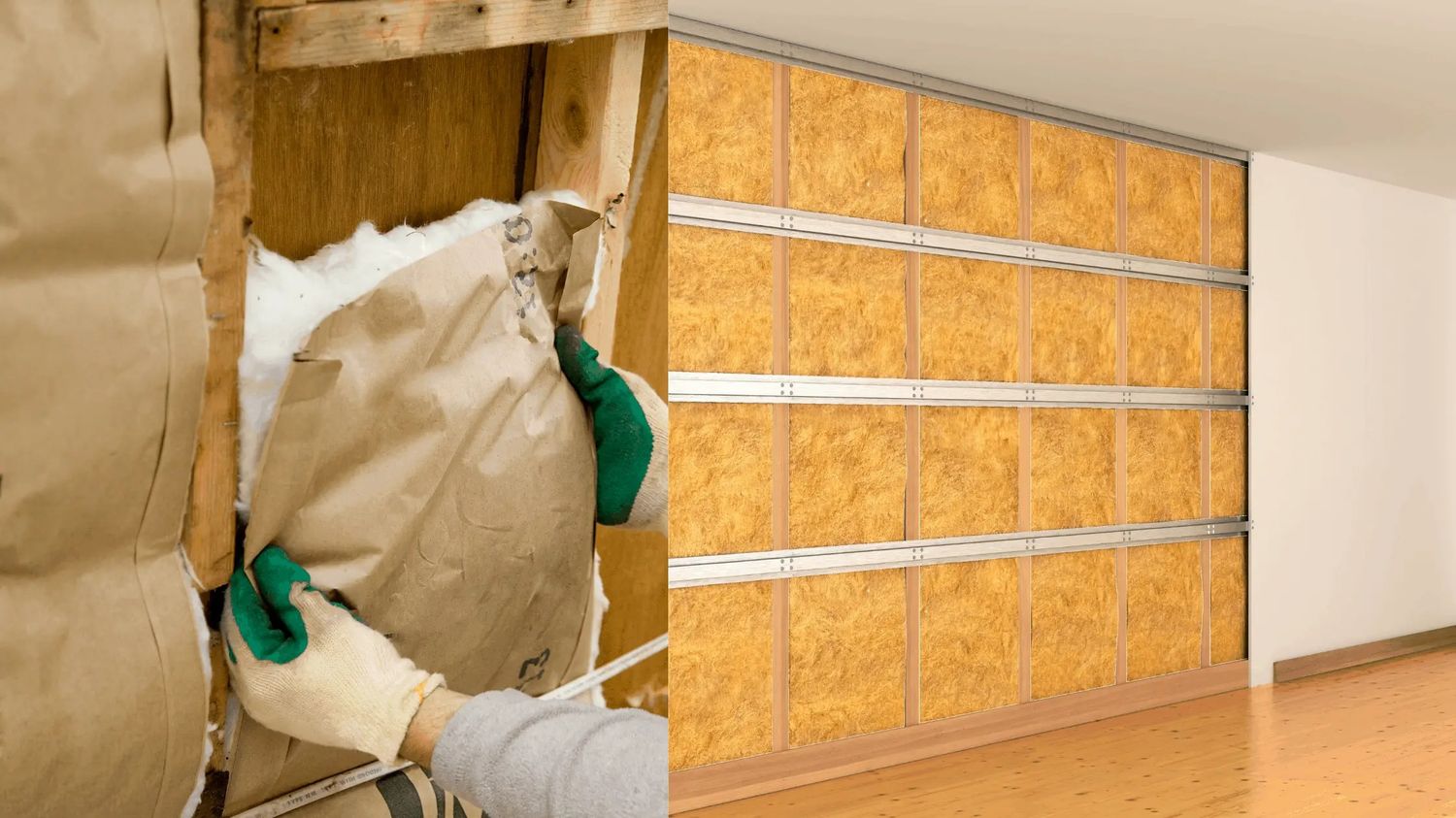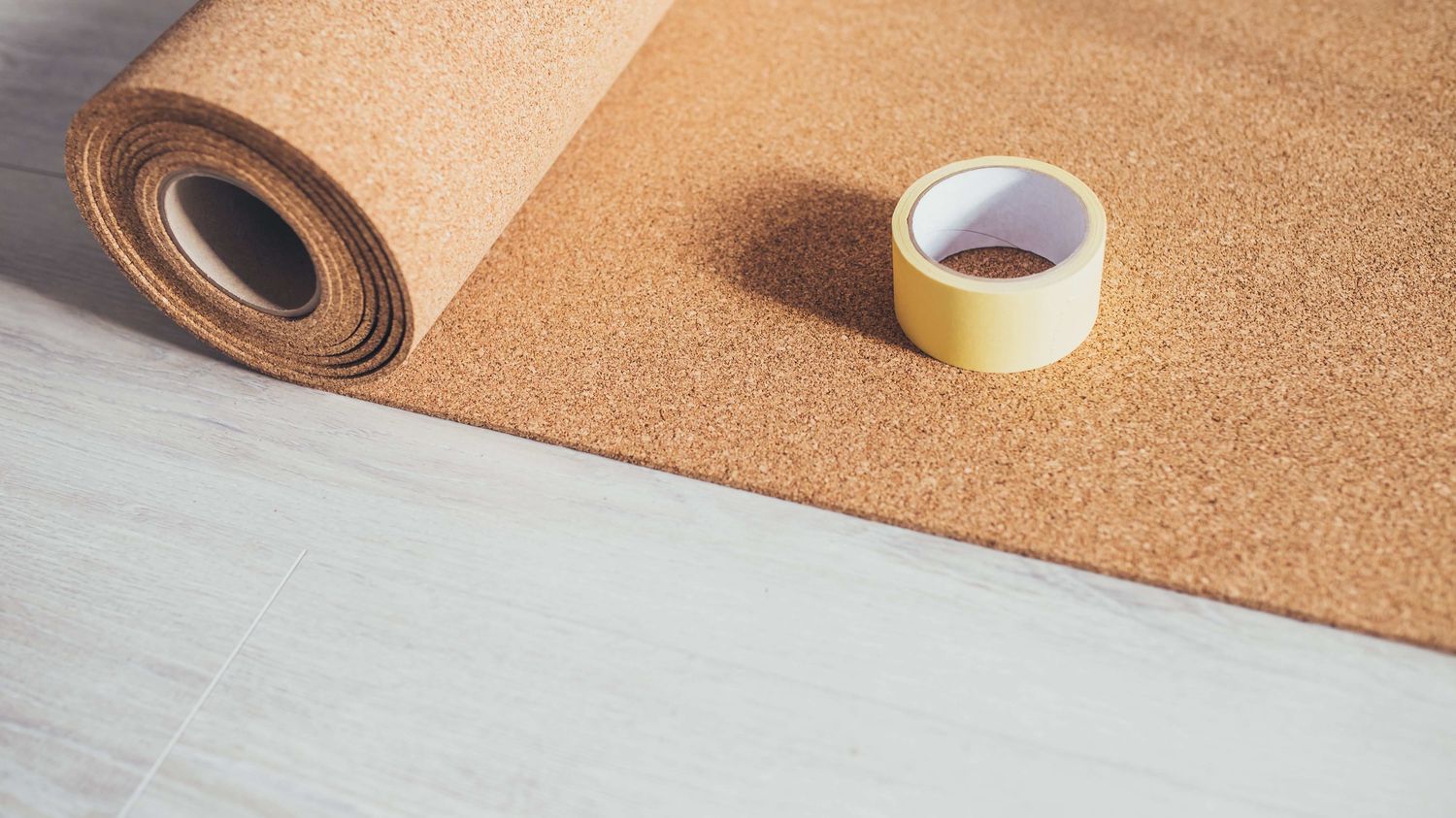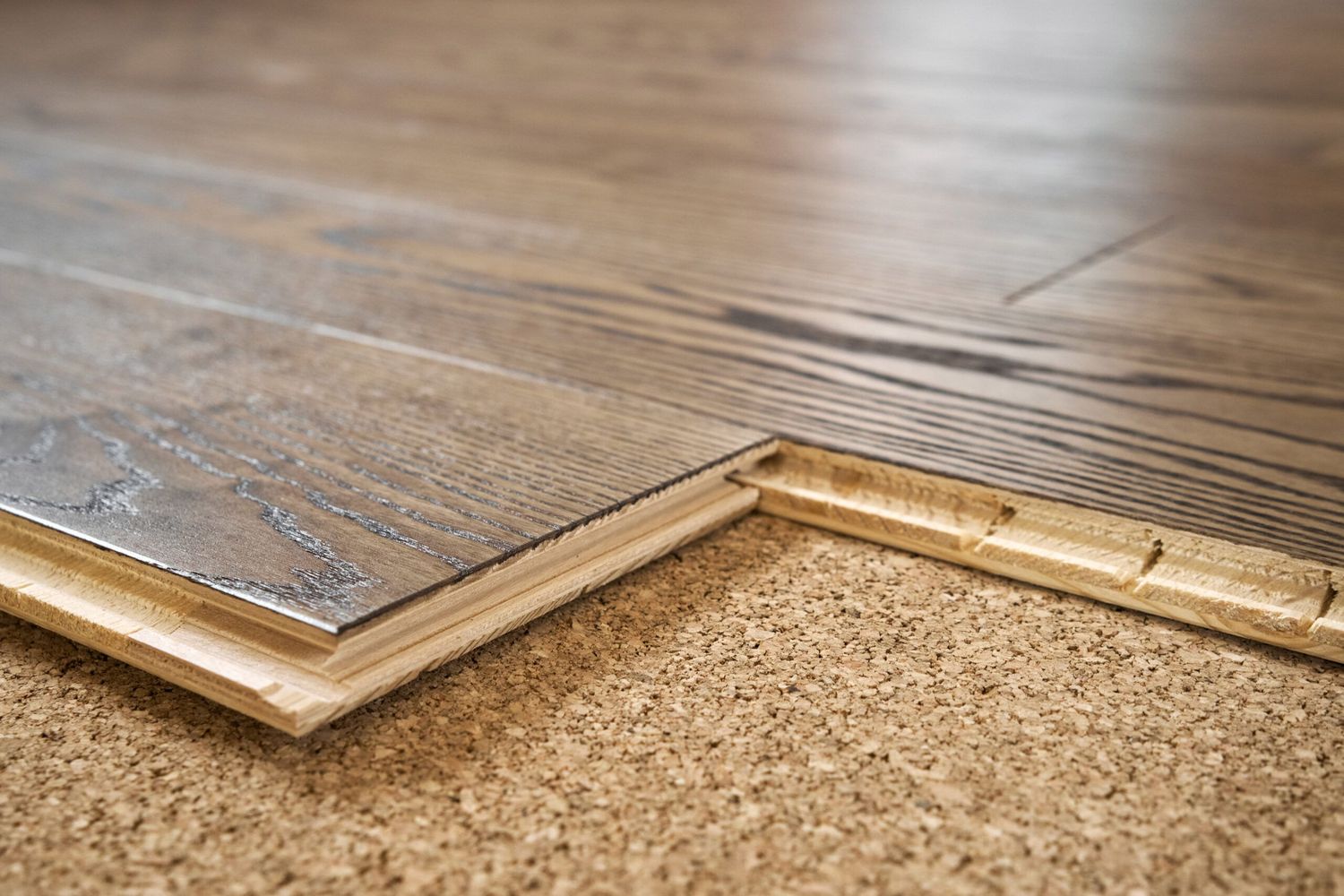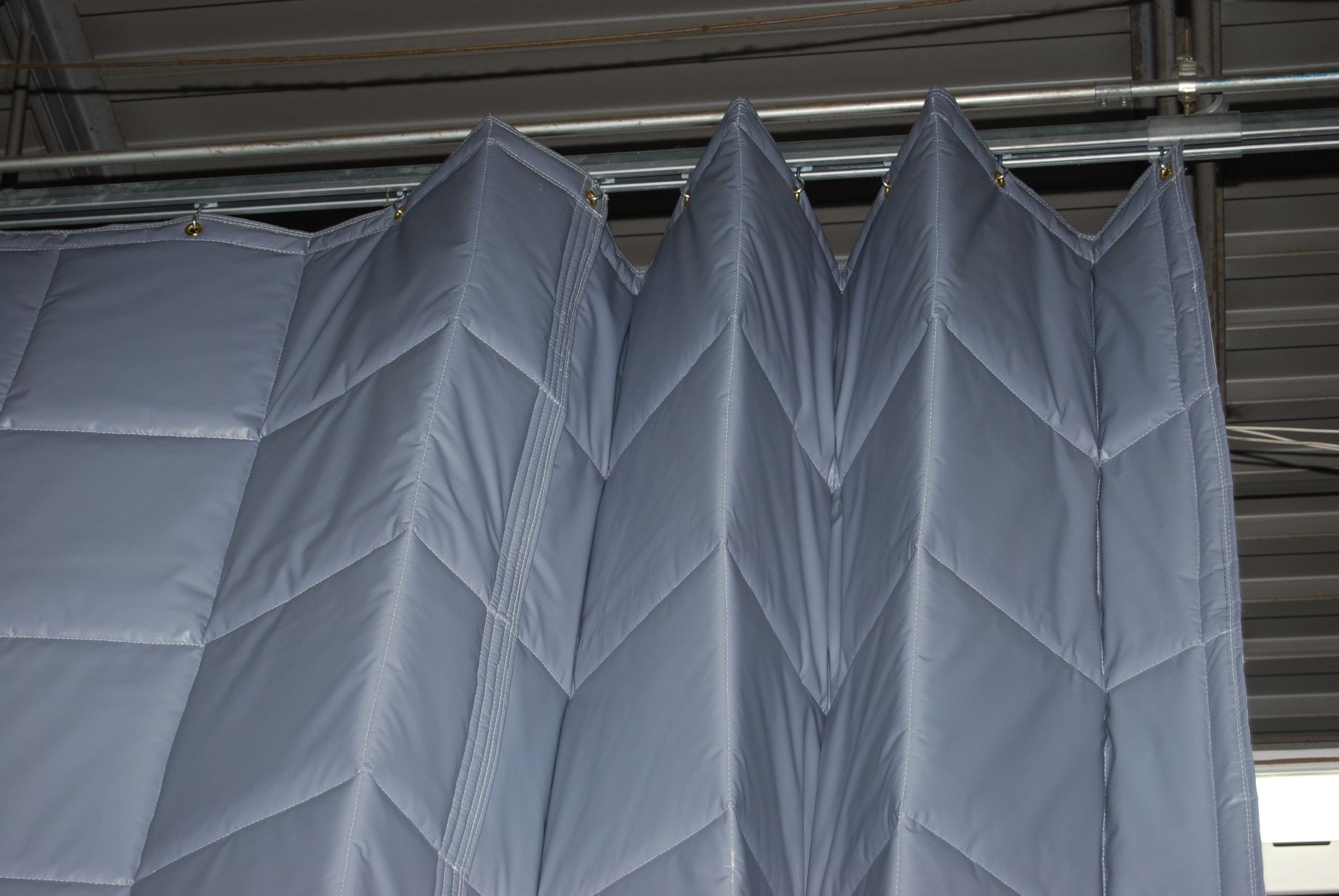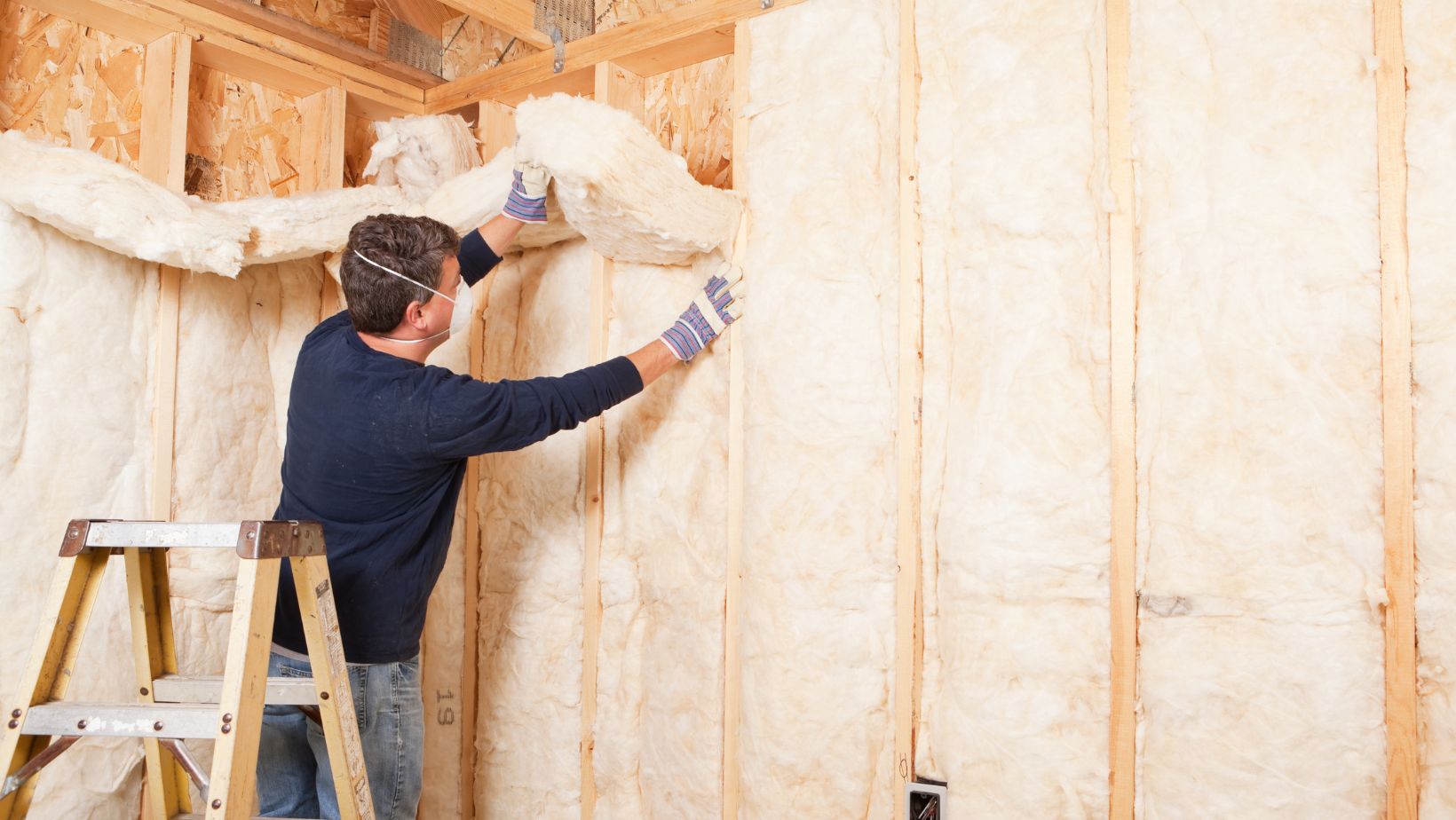Home>Production & Technology>Soundproofing>How Soundproof Is Soundproofing
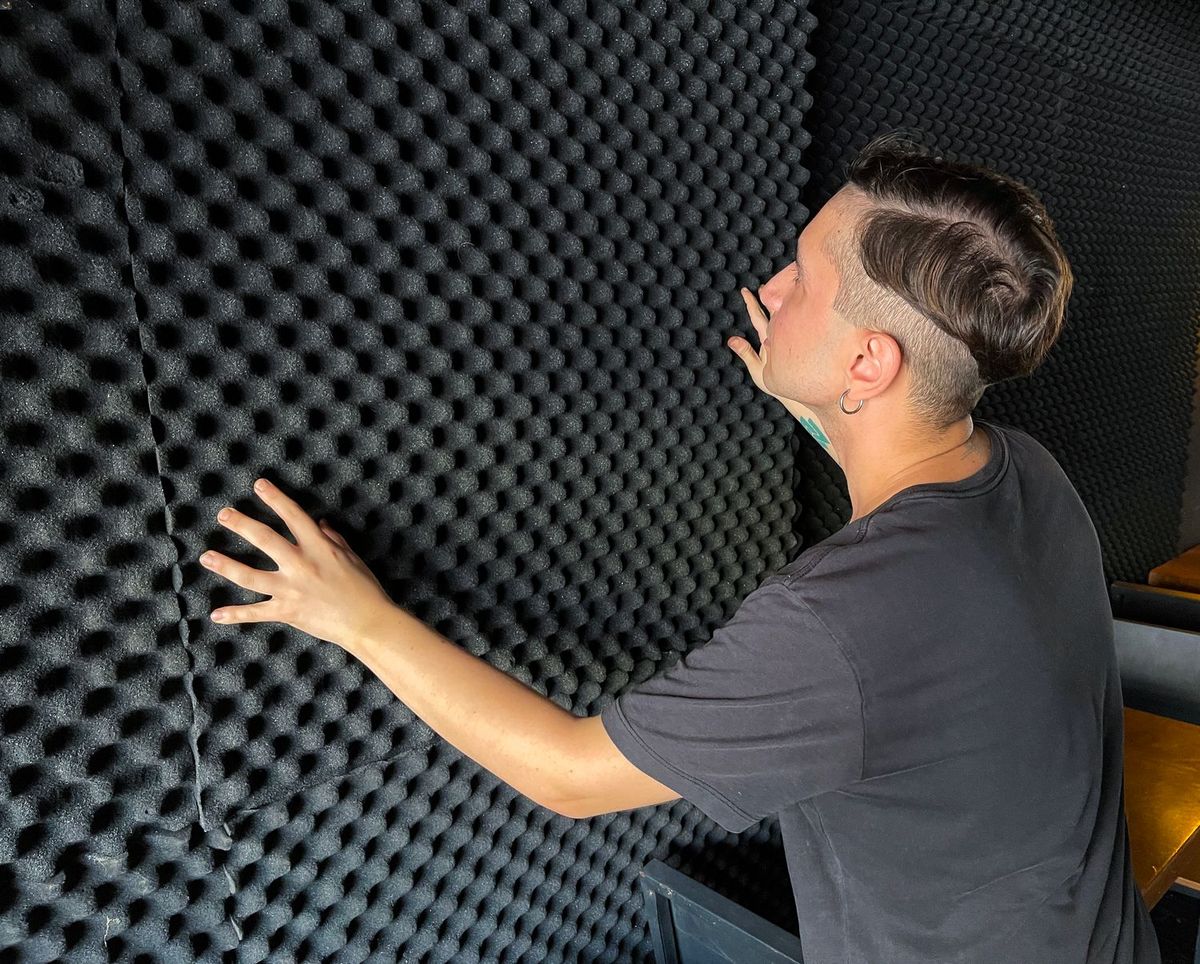

Soundproofing
How Soundproof Is Soundproofing
Published: January 26, 2024
Discover the effectiveness and benefits of soundproofing solutions. Find out how soundproofing can greatly reduce noise disturbances in your home or office.
(Many of the links in this article redirect to a specific reviewed product. Your purchase of these products through affiliate links helps to generate commission for AudioLover.com, at no extra cost. Learn more)
Table of Contents
Introduction
When it comes to creating a peaceful and quiet environment, soundproofing is the key. Whether you’re dealing with noisy neighbors, street traffic, or the constant hum of appliances, soundproofing can significantly reduce unwanted noise and enhance your comfort at home or work.
Soundproofing is the process of reducing sound transmission from one area to another. It involves the use of various techniques and materials to absorb, block, or isolate sound waves, preventing them from entering or leaving a space.
In today’s fast-paced world, where noise pollution is a constant problem, soundproofing has become increasingly important. Not only does it enhance privacy and tranquility, but it also provides numerous benefits, including improved productivity, better sleep quality, and enhanced concentration.
In this article, we will delve into the world of soundproofing, exploring different materials, techniques, and technologies that can be employed to achieve optimal sound insulation. Whether you’re a homeowner looking to create a quiet sanctuary or a business owner aiming to improve the acoustics of your office or studio, this guide will provide you with valuable insights and practical advice.
Before diving into the technical aspects of soundproofing, it’s essential to understand the basic principles behind it. Sound is a form of energy that travels in waves through air, liquids, and solids. When sound waves encounter a surface, they can be absorbed, transmitted, or reflected, depending on the properties of the material.
The goal of soundproofing is to minimize sound transmission by reducing the amount of energy transferred from one space to another. This can be achieved through a combination of absorption, vibration isolation, and sound blocking techniques. By understanding the science behind soundproofing, you can make informed decisions about the materials and methods that will best suit your needs.
Now that we have laid the foundation, let’s explore the world of soundproofing in greater detail. We will discuss common soundproofing materials, evaluate their effectiveness, and provide tips and techniques for different spaces. So, whether you’re looking to create a serene bedroom, a quiet home office, or a peaceful recording studio, get ready to discover the secrets of effective soundproofing.
Understanding Soundproofing
To fully comprehend how soundproofing works, it’s important to understand the principles of sound transmission. Sound travels in waves, and when these waves encounter a surface, they can be reflected, absorbed, or transmitted through it.
Soundproofing involves disrupting the path of sound waves to minimize their transmission from one space to another. This can be achieved by using materials and techniques that absorb, block, or isolate sound waves.
One common approach to soundproofing involves the use of sound-absorbing materials. These materials are designed to capture and dissipate sound energy, effectively reducing echoes and reverberations. They are often used in spaces where sound quality is important, such as recording studios, theaters, and concert halls. Examples of sound-absorbing materials include acoustic foam panels, fiberglass insulation, and heavy curtains.
Another method of soundproofing is through sound isolation. This technique involves creating a barrier to prevent sound waves from transferring through walls, floors, or ceilings. Sound isolation can be achieved by using dense and heavy materials, such as mass-loaded vinyl or drywall with soundproofing compounds. Additionally, construction techniques like double walls or resilient channels can be employed to further reduce sound transmission.
Sound blocking is another crucial aspect of soundproofing. This technique involves using materials that are designed to block or reflect sound waves, preventing them from entering or leaving a space. Common sound-blocking materials include resilient underlays, soundproof doors and windows, and soundproof curtains. These materials create a barrier that stops sound waves in their tracks, effectively reducing noise pollution.
Understanding the principles of soundproofing allows you to choose the right materials and techniques for your specific needs. Keep in mind that no soundproofing solution is entirely foolproof, and the effectiveness of soundproofing measures can vary depending on factors such as the type of noise, the frequency range, and the structural characteristics of the space.
In the next sections, we will explore some of the common soundproofing materials, techniques, and considerations for different spaces. By understanding the fundamentals, you will be well-equipped to create a quieter and more peaceful environment wherever you need it.
Common Soundproofing Materials
There is a wide range of materials available for soundproofing, each with its own unique properties and applications. Here are some of the most commonly used soundproofing materials:
1. Acoustic Foam Panels: Acoustic foam is a lightweight and porous material that absorbs sound waves. It is commonly used in recording studios, home theaters, and other spaces where sound quality is critical. Acoustic foam panels are easy to install and come in various sizes and shapes to fit different needs.
2. Mass-Loaded Vinyl (MLV): MLV is a dense and flexible material that is excellent for blocking sound transmission. It is often used to create sound barriers in walls, floors, and ceilings. MLV can be applied to existing surfaces or installed during construction, making it a versatile choice for soundproofing projects.
3. Fiberglass Insulation: Fiberglass insulation is a popular choice for soundproofing walls and ceilings. It is made of fine glass fibers that trap sound waves and dissipate their energy. Fiberglass insulation is easy to install and is effective at reducing both airborne and impact noise.
4. Soundproof Curtains: Soundproof curtains are heavy and dense curtains that are designed to block sound waves from entering or leaving a room. They are an excellent option for reducing noise from outside sources, such as traffic or neighbors. Soundproof curtains are often used in bedrooms, home offices, and recording studios.
5. Green Glue: Green Glue is a viscoelastic compound that is used to dampen vibrations and reduce sound transmission. It is applied between layers of drywall or other building materials to create a soundproof barrier. Green Glue is effective at reducing both airborne and impact noise and is commonly used in construction projects.
6. Double Glazed Windows: Double glazed windows consist of two panes of glass with a layer of air or gas between them. This design creates an additional barrier to block sound waves from entering or leaving a room. Double glazed windows are widely used in residential and commercial buildings to reduce noise from outside sources.
It’s important to note that the effectiveness of these materials can vary depending on the specific application and the characteristics of the space. Consulting with a soundproofing professional can help you determine the most suitable materials for your needs.
In the next section, we will explore the effectiveness of soundproofing and discuss factors that can impact its efficiency.
The Effectiveness of Soundproofing
Soundproofing techniques and materials can greatly reduce the amount of unwanted noise in a space. However, it’s essential to understand that complete sound elimination is often not possible. Soundproofing primarily aims to minimize the transmission of sound rather than completely block it.
The effectiveness of soundproofing measures depends on several factors. These include the type and intensity of the noise source, the frequency range of the sound waves, and the structural characteristics of the space. For example, low-frequency sounds are typically more challenging to block than high-frequency sounds due to their longer wavelengths.
In general, soundproofing can reduce noise levels by 20 to 50 decibels, depending on the materials and techniques used. This level of reduction can make a significant difference in creating a more peaceful and quiet environment.
It’s important to note that soundproofing is most effective when multiple techniques are combined. Using a combination of absorption, isolation, and blocking methods can provide the best results. For example, sound-absorbing materials can help reduce echoes and reverberations, while sound-blocking materials can create a barrier against external noise sources.
However, it’s worth mentioning that the effectiveness of soundproofing measures can vary depending on the quality of the materials used and the installation techniques employed. Proper installation and sealing of gaps and air leaks are crucial for achieving optimal soundproofing results.
Additionally, the overall success of soundproofing efforts can also depend on the expectations and tolerance levels of the individuals in the space. Some individuals may find a 20-decibel reduction satisfying, while others may still perceive residual noise. It’s important to have realistic expectations and understand that complete silence may not be attainable in all situations.
In the next section, we will explore the various factors that can impact the efficiency of soundproofing, allowing you to make informed decisions when implementing soundproofing measures.
Factors that Affect Soundproofing Efficiency
The efficiency of soundproofing measures can be influenced by various factors. Understanding these factors can help you optimize your soundproofing efforts and achieve the best possible results. Here are some key factors to consider:
1. Material Quality: The quality of the soundproofing materials used can directly impact their effectiveness. Investing in high-quality materials that are specifically designed for soundproofing purposes can yield better results than using generic or subpar alternatives. Material density, thickness, and specific soundproofing properties are important considerations.
2. Installation Techniques: Proper installation is crucial for effective soundproofing. Gaps, cracks, and improper sealing can compromise the soundproofing capabilities of materials. It’s important to follow manufacturer guidelines and ensure that all materials are installed correctly, paying attention to corners, edges, and joints.
3. Structural Design: The structural characteristics of a space can influence sound transmission. Lightweight and thin walls or partitions are more prone to sound leakage compared to thicker, denser walls. The presence of air gaps or lack of insulation can also impact soundproofing efficiency. In some cases, structural modifications may be necessary to achieve optimal results.
4. Noise Source: The type and intensity of the noise source can affect the effectiveness of soundproofing measures. Continuous low-frequency sounds, such as traffic noise, can be more challenging to block compared to sporadic high-frequency sounds. Identifying the characteristics of the noise source can guide you in selecting the most appropriate soundproofing materials and techniques.
5. Frequency Range: Different sound frequencies require different approaches for effective soundproofing. Low-frequency sounds have longer wavelengths and can penetrate materials more easily. Combining different soundproofing techniques that target a wide frequency range can help achieve better overall sound reduction.
6. Sound Leakage Points: Sound can find its way through even the smallest gaps and openings. Identifying and sealing sound leakage points is crucial for effective soundproofing. Common leakage points include windows, door gaps, electrical outlets, and ventilation systems. Using weatherstripping, acoustic sealants, and soundproofing tapes can help minimize sound leakage.
7. Personal Tolerance: Each individual has a different tolerance level for sound. While a certain level of sound reduction may be satisfactory for some, others may require a higher degree of soundproofing. Understanding your personal tolerance for noise can help set realistic expectations and guide your soundproofing efforts.
By considering these factors and tailoring your soundproofing approach accordingly, you can maximize the efficiency of your soundproofing measures and create a more peaceful and quiet environment.
In the next section, we will explore specific soundproofing techniques that can be applied to different spaces, such as bedrooms, home offices, and entertainment areas.
Soundproofing Techniques for Different Spaces
Soundproofing techniques can be customized according to the specific needs of different spaces. Whether you want to create a serene bedroom, a quiet home office, or a soundproof entertainment area, here are some effective techniques to consider:
1. Bedrooms: A peaceful bedroom environment is essential for a good night’s sleep. To soundproof your bedroom, start by using sound-absorbing materials on the walls, such as acoustic foam panels or fiberglass insulation. Installing heavy curtains or soundproof blinds can help block external noise. Consider adding weatherstripping to doors and windows to reduce sound leakage. You can also use a white noise machine or a fan to mask residual noise.
2. Home Offices: A quiet home office is crucial for concentration and productivity. Begin by using sound-absorbing materials on the walls and ceiling, such as acoustic panels or even bookshelves filled with books. Consider using a solid-core door with weatherstripping to block noise from the rest of the house. If the office floor is above a noisy area, adding a soundproof underlayment under the flooring can help reduce impact noise.
3. Entertainment Areas: To create a dedicated entertainment space with minimal noise leakage, it’s important to address both airborne and impact noise. Use soundproofing materials on the walls, such as mass-loaded vinyl or acoustic panels, to absorb and block sound. Install soundproof curtains or blinds to prevent sound from escaping through windows. Consider adding a resilient underlayment under the flooring to reduce impact noise transmission. Proper placement and isolation of speakers and subwoofers can also help contain sound within the area.
4. Home Theaters: Immersive movie experiences require effective sound isolation. Constructing a room within a room using double walls or specialized soundproofing materials can help contain sound. Use soundproof doors with seals to eliminate sound leakage. Pay attention to acoustic treatment using diffusion and absorption panels to enhance sound quality within the theater. Insulating the ceiling and using a floating floor system can further reduce sound transmission.
5. Recording Studios: Soundproofing is critical in recording studios to achieve accurate audio recordings. Use multiple layers of drywall with green glue for walls and ceilings to block sound. Insulate the space with fiberglass or mineral wool insulation to absorb sound reflections. Additional techniques include creating an airtight seal with acoustic caulk and using specialized acoustic doors and windows.
Remember that the specific techniques and materials required will vary depending on the unique characteristics of each space. Consulting with a professional soundproofing expert can help you design a customized solution tailored to your needs.
In the next section, we will discuss the limitations and challenges of soundproofing and explore new innovations in soundproofing technology.
Limitations and Challenges of Soundproofing
While soundproofing techniques can greatly reduce noise transmission, there are certain limitations and challenges to be aware of. Understanding these limitations will help you set realistic expectations and overcome potential hurdles in your soundproofing project.
1. Complete Sound Elimination is Difficult: Achieving absolute silence is often not possible with soundproofing alone. Soundproofing aims to minimize sound transmission, but it cannot completely eliminate all noise. Some residual noise may still be perceptible, especially at low frequencies or in highly challenging environments.
2. Impact on Space and Aesthetics: Soundproofing measures can sometimes impact the aesthetics and functionality of a space. Adding additional layers of insulation or sound-absorbing materials may reduce space availability or alter the room’s aesthetics. Balancing the need for soundproofing with other design considerations is essential.
3. Structural Limitations: The effectiveness of soundproofing can be limited by the existing structural characteristics of a space. Lightweight walls, thin floors, and shared walls with neighboring units can pose challenges in achieving optimal sound insulation. In some cases, significant structural modifications may be required, which can be costly and time-consuming.
4. Cost and Complexity: Soundproofing projects can be expensive and complex, especially if extensive modifications or professional assistance are required. The cost of high-quality materials, professional installation, and specialized equipment can add up quickly. It’s essential to carefully consider the budget and feasibility of the project before diving in.
5. Airflow and Ventilation: Soundproofing measures can sometimes compromise airflow and ventilation in a space. Sealing gaps and adding soundproofing materials to windows and doors may reduce the natural ventilation or disrupt the HVAC system. Proper consideration should be given to maintain a balance between soundproofing and ventilation needs.
6. Potential Sound Reflections: Soundproofing measures that only absorb sound waves without redirecting them can result in sound reflections within the space. This can lead to echo and reverberation issues, particularly in larger or acoustically sensitive spaces. Proper acoustic treatment using diffusion panels can help address this challenge.
Despite these limitations, soundproofing remains a valuable solution for reducing noise and creating a more peaceful environment. By understanding the challenges and working with the appropriate professionals, you can navigate these obstacles and achieve significant noise reduction.
In the next section, we will explore new innovations in soundproofing technology that are pushing the boundaries of traditional methods.
New Innovations in Soundproofing Technology
Advancements in technology have paved the way for innovative solutions in the field of soundproofing. These new technologies aim to overcome traditional limitations and offer enhanced soundproofing capabilities. Here are some notable innovations:
1. Soundproof Paint: Soundproof paint is a new development that combines sound-absorbing properties with a visually appealing finish. This special paint contains microscopic sound-absorbing fibers that help reduce noise reflections. It can be applied to walls, ceilings, and other surfaces to enhance soundproofing without the need for bulky materials.
2. Active Noise Control: Active noise control, also known as ANC or noise-canceling technology, is commonly used in headphones and earphones. This technology utilizes microphones to capture external sounds and then generates a counter sound wave that cancels out the incoming noise. ANC can also be applied to architectural spaces, providing real-time noise reduction by emitting counter sound waves to cancel out unwanted noise, creating a quieter environment.
3. Soundproof Windows: Traditional double-glazed windows are effective in reducing noise, but new technologies have taken window soundproofing to the next level. Windows with laminated glass and sound-damping interlayers can offer superior sound reduction. Some advanced options even incorporate vacuum-sealed insulating layers and specialized framing materials for increased noise reduction.
4. Soundproof Drywall: Soundproof drywall is a revolutionary product designed specifically for sound insulation. It consists of gypsum boards with added mass and sound-damping properties. This type of drywall improves soundproofing performance, especially in areas where space is limited and traditional soundproofing methods are impractical.
5. Cellular Rubber Insulation: Cellular rubber insulation is a flexible and versatile material that is used for soundproofing pipes, HVAC systems, and equipment. It is lightweight, easy to install, and effectively absorbs sound vibrations. Cellular rubber insulation improves sound insulation in a range of applications, ensuring that noise is not transmitted through mechanical systems.
6. Vibro-Acoustic Materials: Vibro-acoustic materials are designed to address both structural-borne and airborne noise. These materials have viscoelastic properties that effectively convert sound energy into heat. They can be used in various applications, such as automotive interiors, marine vessels, and industrial machinery, to minimize noise and vibrations.
These new innovations in soundproofing technology offer exciting possibilities for creating quieter and more peaceful environments. Keep in mind that the effectiveness and availability of these technologies may vary, and it’s important to research and consult with professionals to determine the best solution for your specific needs.
In the next section, we will conclude our exploration of soundproofing and summarize the key takeaways from this article.
Conclusion
Soundproofing is a valuable solution for reducing unwanted noise and creating a more peaceful environment. Whether you’re dealing with noisy neighbors, traffic sounds, or workplace disturbances, soundproofing techniques can significantly improve the tranquility of your space.
In this article, we explored the fundamentals of soundproofing and discussed common soundproofing materials and their effectiveness. We also examined factors that can impact soundproofing efficiency, such as material quality, installation techniques, and the characteristics of the noise source.
We discussed soundproofing techniques tailored for different spaces, including bedrooms, home offices, entertainment areas, home theaters, and recording studios. By customizing soundproofing approaches to suit specific needs, you can optimize noise reduction and enhance the enjoyment of your space.
However, it is important to be aware of the limitations and challenges of soundproofing, such as the difficulty of achieving complete sound elimination and potential impacts on space aesthetics and ventilation. By understanding these limitations, you can set realistic expectations and make informed decisions regarding your soundproofing project.
Furthermore, we explored new innovations in soundproofing technology, such as soundproof paint, active noise control, advanced soundproof windows, soundproof drywall, cellular rubber insulation, and vibro-acoustic materials. These advancements offer exciting possibilities for improved soundproofing performance and a more comfortable living or working environment.
In conclusion, soundproofing is a powerful tool for reducing noise and enhancing the quality of life in various spaces. By applying the principles and techniques discussed in this article, you can create a quieter, more serene environment that promotes productivity, relaxation, and overall well-being.
Remember to consider the specific needs of your space, consult with professionals when necessary, and strive for a balance between sound reduction and aesthetic considerations. With thorough planning and the right soundproofing materials and techniques, you can enjoy a more peaceful and enjoyable living or working space.

